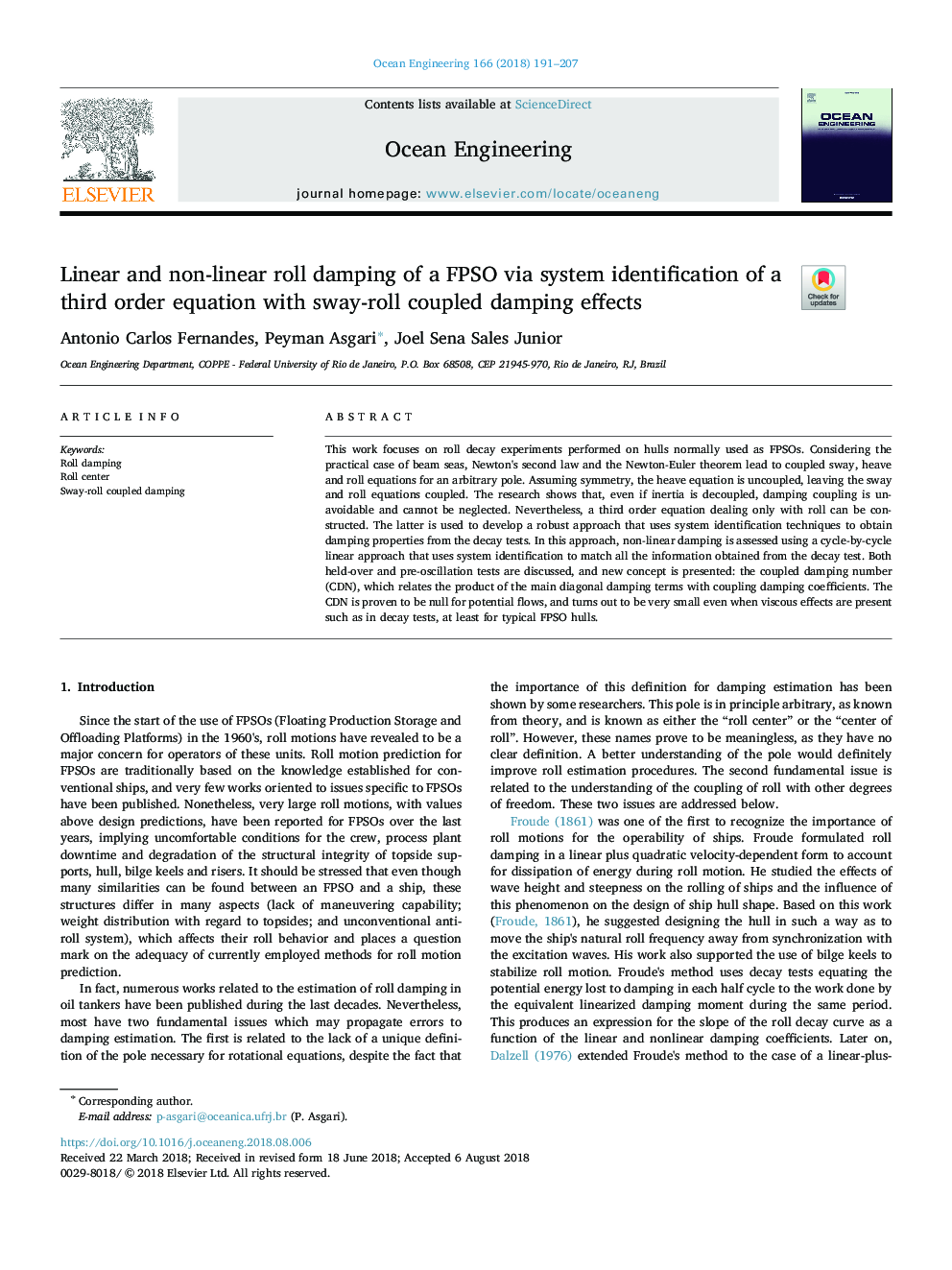| Article ID | Journal | Published Year | Pages | File Type |
|---|---|---|---|---|
| 8061729 | Ocean Engineering | 2018 | 17 Pages |
Abstract
This work focuses on roll decay experiments performed on hulls normally used as FPSOs. Considering the practical case of beam seas, Newton's second law and the Newton-Euler theorem lead to coupled sway, heave and roll equations for an arbitrary pole. Assuming symmetry, the heave equation is uncoupled, leaving the sway and roll equations coupled. The research shows that, even if inertia is decoupled, damping coupling is unavoidable and cannot be neglected. Nevertheless, a third order equation dealing only with roll can be constructed. The latter is used to develop a robust approach that uses system identification techniques to obtain damping properties from the decay tests. In this approach, non-linear damping is assessed using a cycle-by-cycle linear approach that uses system identification to match all the information obtained from the decay test. Both held-over and pre-oscillation tests are discussed, and new concept is presented: the coupled damping number (CDN), which relates the product of the main diagonal damping terms with coupling damping coefficients. The CDN is proven to be null for potential flows, and turns out to be very small even when viscous effects are present such as in decay tests, at least for typical FPSO hulls.
Keywords
Related Topics
Physical Sciences and Engineering
Engineering
Ocean Engineering
Authors
Antonio Carlos Fernandes, Peyman Asgari, Joel Sena Sales Junior,
